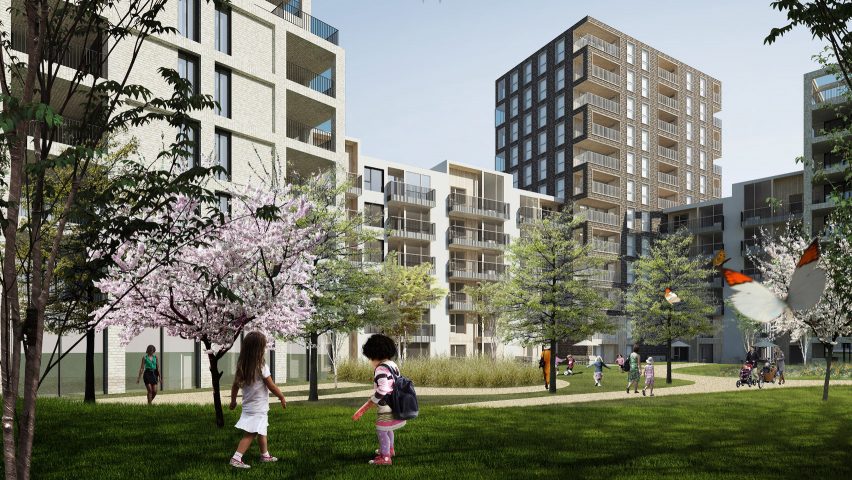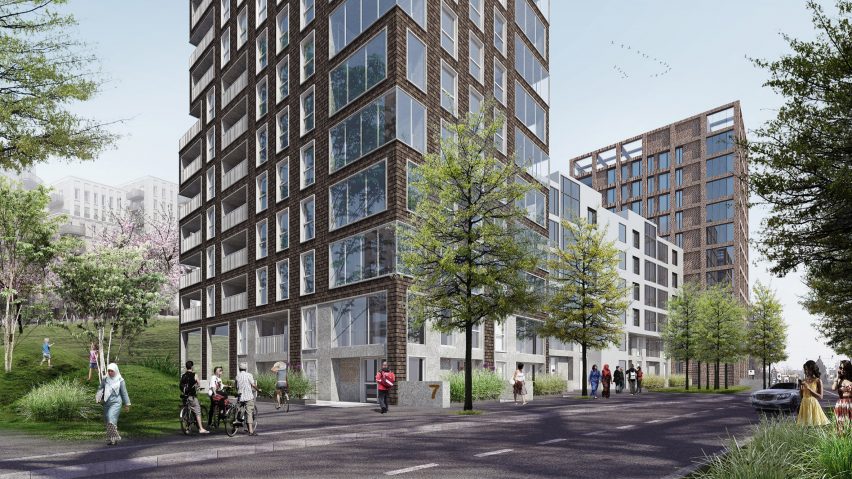
CF Møller appointed on Robin Hood Gardens replacement scheme
Scandinavian firm CF Møller has been appointed alongside Haworth Tompkins and Metropolitan Workshop on the housing scheme that will replace Robin Hood Gardens, the brutalist estate in east London designed by Alison and Peter Smithson.
CF Møller's housing will take the place of the eastern block of the iconic estate, while residences by Haworth Tompkins and Metropolitan Workshop – who were appointed to the scheme in 2016 – will sit on the site of the west wing.
The plans form part of the £300 million regeneration of the Robin Hood Gardens estate in Popular, which is being overseen by Swan Housing Association.
The estate, which was completed in 1974, is currently awaiting its demolition, despite a high-profile campaign to save it as a prime example of the brutalist movement.
Dezeen recently used a drone to film the estate, which is partially deserted and boarded up in preparation for its demolition in the coming weeks.
CF Møller's design will provide 330 homes – half of which are to be earmarked as affordable – for the regeneration scheme known as the Blackwall Reach Regeneration Project.
Early visuals show the range of one- to five-bedroom flats contained within a brick-clad block on the edge of the garden that currently separates the two wings of the brutalist estate. This outdoor space with its distinctive mound is the only element of Robin Hood Gardens that will be retained. It is to be re-landscaped and renamed the Millennium Green.
"Our approach to this challenging project is to develop an architectural and place-making response with the focus on designing the best possible new homes within a challenging location," said CF Møller associate partner Rolf Nielsen.
CF Møller's housing will form phase three of the Blackwall Reach Regeneration Project, which will see 1,500 apartments, commercial spaces and a mosque packed onto the site beside Blackwall Tunnel that currently offers 252 homes.

Phase one is currently underway, with 98 homes already on site, alongside the mosque, a community centre and an extension of a neighbouring school. Yet to come in this phase – which is set for completion in early 2019 – are 242 further homes, as well as shops and cafes.
Phase two is expected to begin imminently, and will see the delivery of four buildings by Metropolitan Workshop and Haworth Tompkins, which are to provide 268 homes.
"We were very impressed by their 'inside-out approach' to design. CF Møller really focused on the people who will live in these new homes and the relationship of the homes to the public realm," said Swan's regeneration and development director Geoff Pearce.
"They were passionate about ensuring we deliver human-scale street scenes and links into the landscape to offset the impact of the busy external environment," he added.
Robin Hood Gardens is considered exemplary of new brutalism, an architectural style gaining its name from the French béton-brut, or raw concrete, used to form the structures.
Architects including Richard Rogers, the late Zaha Hadid, Toyo Ito and Robert Venturi, as well as the Smithson's son, all petitioned to save the estate. But the campaign failed and politicians have been calling for its demolition since.